Retro Tech: 15 Classic Video Games that You Can Play Online, and How They Paved the Way for Modern Games
April 14, 2016
7 minute read

While IT admins and tech lovers are usually at the forefront of sophisticated technology, sometimes it can be rewarding to step back and think about how far we’ve come. We often write about how much technology has changed the way we work, but how has it affected the way we play games?
Today, we live in a pixel-perfect era of 4K video games. Landscapes are sprawling and stunningly immersive. We can sync games to the cloud without even batting an ultra HD eye. But just a few decades ago, our primitive video games consisted of nothing more than pixelated blobs and bouncing lines.
These are just a few of the many video games that pioneered new genres and technology, laid the foundation for modern-day gaming, and spawned iconic franchises that are still successful today. And as a bonus: You can play all of these retro games online for free right within your web browser.
1. Oregon Trail

In 1971, Oregon Trail was created by several young student teachers as a way to get their students interested in the 19th-century pioneer journey out west. It was an early strategic game that introduced the concepts of resource management and risk management to players. In the early 1980s, it was released as a stand-alone game to the public on the Apple-II, making its way into schools everywhere and becoming a pioneer of the edutainment genre. [Play it here]
2. Pong

Atari’s first product in 1972—a simple table tennis arcade video game called Pong—came with just one instruction: “Avoid missing ball for high score.”
Pong was originally developed as an internal training exercise; it wasn’t even meant to be sold commercially. But soon it began appearing in pubs, bowling alleys, and JC Penney stores. In fact, people even lined up outside bars in the morning to play it. Making $3.2 million in profit, Pong was the the first commercially successful arcade game, and it ushered in video games as a new form of entertainment. [Play it here]
3. Colossal Cave Adventure

In 1975, programmer Will Crowther created a text-only, interactive game called Colossal Cave Adventure, where players entered text commands to explore a virtual cave and solve puzzles. He spawned an entirely new gaming genre called interactive fiction, hypertext, or interactive storytelling, which laid the foundation for future adventure games and role-playing games. [Play it here]
4. Space Invaders
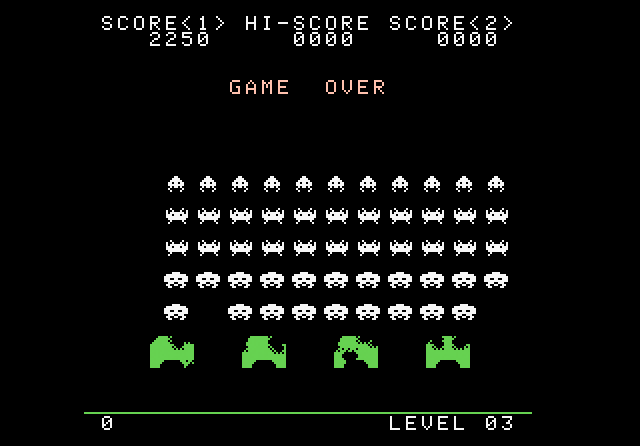
Space Invaders, an arcade game about shooting aliens, became immensely popular all around the world in 1978. (Urban legend says it caused a national shortage of 100-yen coins in Japan.) With its blocky, iconic aliens, it visually defined the look of commercial video games. It also paved the way for modern video games by pioneering the “shoot-em-up” genre and using music as a device to influence players’ emotions. It was the first game that introduced a difficulty curve—it got more challenging as you played. But this wasn’t intentional; it was actually a glitch due to technical limitations. As you blasted away aliens, fewer aliens on the screen meant a lighter load on the processor and, in turn, faster rendering. The aliens sped up, as did the 4-note soundtrack. Video games now had the ability to feel suspenseful and formidable, and this happy accident laid the foundation for future gameplay. [Play it here]
5. Battlezone

In 1980, Battlezone was one of the first video games to use vector graphics technology, and visuals became smoother and cleaner. It is considered by some to be the first virtual reality arcade game because it featured 3D wireframe graphics and players had to look through a “periscope” to play the game. [Play it here]
6. Pitfall!

Several Atari programmers defected in 1980 and created Activision, the world’s first independent video game developer and distributor. They went on to produce some of Atari’s best-selling games like Pitfall!, where you navigated through a jungle and collected treasures. Pitfall! was an early platform game, and though it technically didn’t side-scroll, it was certainly an early version of it. It paved the way for gameplay found in Super Mario Bros. [Play it here]
7. Pac-Man
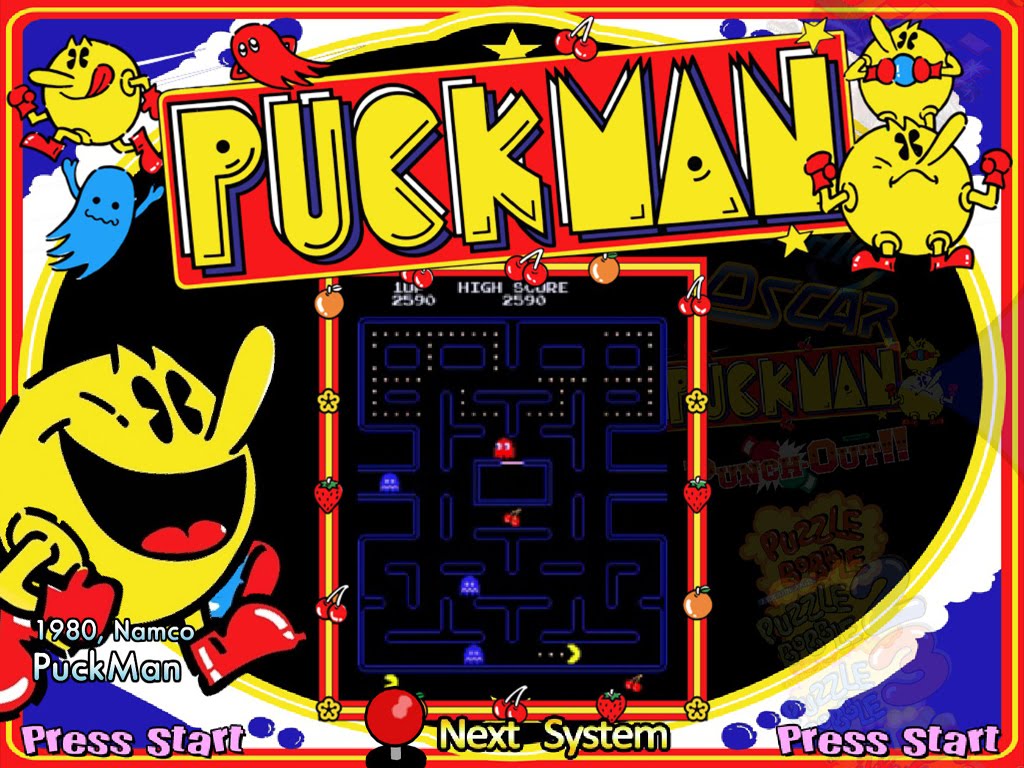
Pac-Man hit the arcade scene in 1980 and was an overnight sensation. Since the little yellow circle looked like a puck, it was originally called Puck-Man, but executives feared that name was too easy to vandalize, so they changed it. The character was half-inspired by a pizza pie missing a slice and half-inspired by the Japanese character for “mouth.” In an era where most games were space shooters, designer Toru Iwatani made the game about eating because he wanted something equally appealing to both men and women. Sure enough, it was a universal hit. Raking in more than $1 billion in quarters, it’s the highest grossing arcade game in history, as well as a major pop culture icon. Pac-Man introduced the idea that video games could cross over and have mainstream appeal if they had strong characters. Audiences loved the Pac-Man character so much that there was even a Pac-Man TV series, not to mention merchandise like Pac-Man cereal, pasta, board games, toys, radios, etc. [Play it here]
8. Donkey Kong
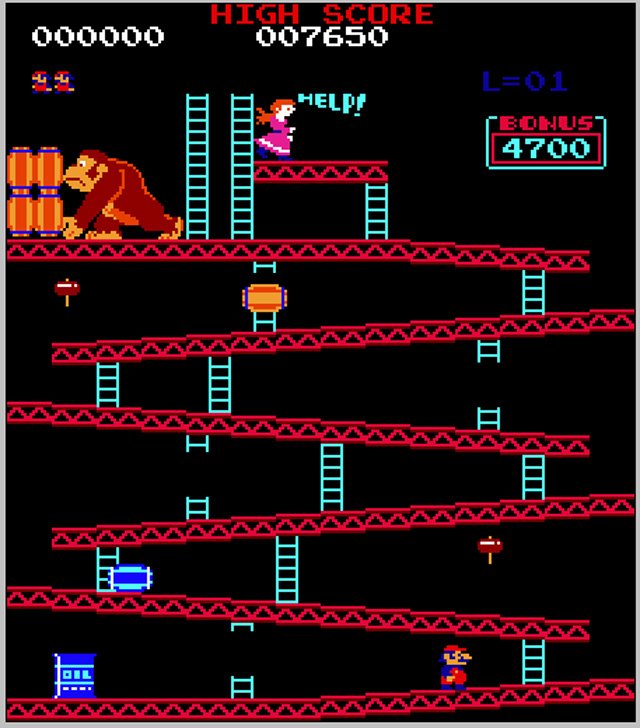
In 1981, the world met a carpenter named Jumpman and his pet gorilla, Donkey Kong. It was one of the first games to have an actual plot (Jumpman must climb the construction site to save his girlfriend, Pauline, who’s been kidnapped by Donkey Kong). Donkey Kong was a smash hit and a milestone in the annals of gaming history; it was one of the first jump-and-run platform games and gave rise to a new style of gaming. Players around the world loved the silly narrative, playful graphics, interesting characters, and humor. But as we’d discover a few years later, the true breakout star of the game was Jumpman (later renamed Mario). [Play it here]
9. Super Mario Bros.
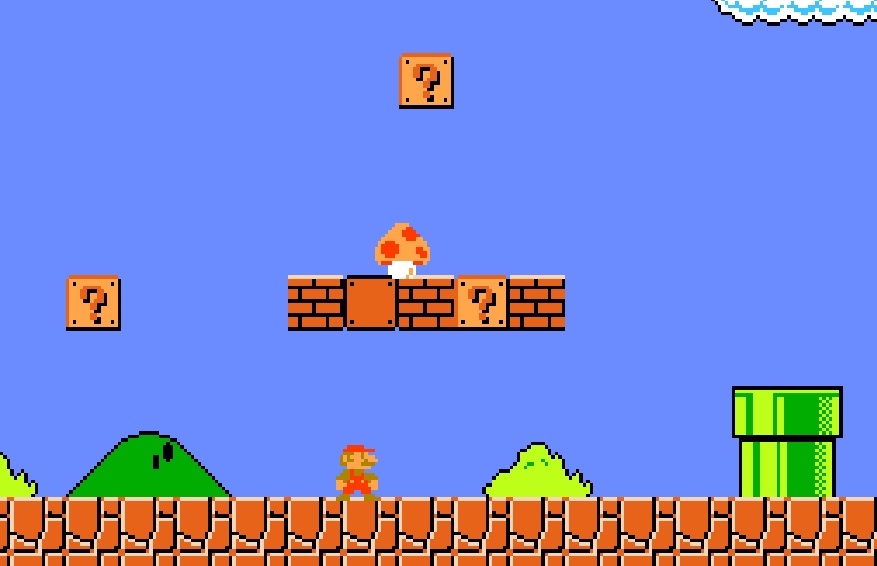
Nintendo released its 8-bit NES console in 1985, helping resuscitate a flailing American video game industry that was still recovering after a massive crash two years earlier. The NES came bundled with Super Mario Bros., which introduced groundbreaking technical innovation (side-scrolling), as well as a visually rich, quirky world that players had never seen before. The jump-happy Italian-American plumber brothers known as Mario and Luigi instantly became iconic characters. Super Mario Bros. was a cultural phenomenon and a massive commercial success—it remains the best-selling video game franchise to this day. [Play it here]
10. SimCity
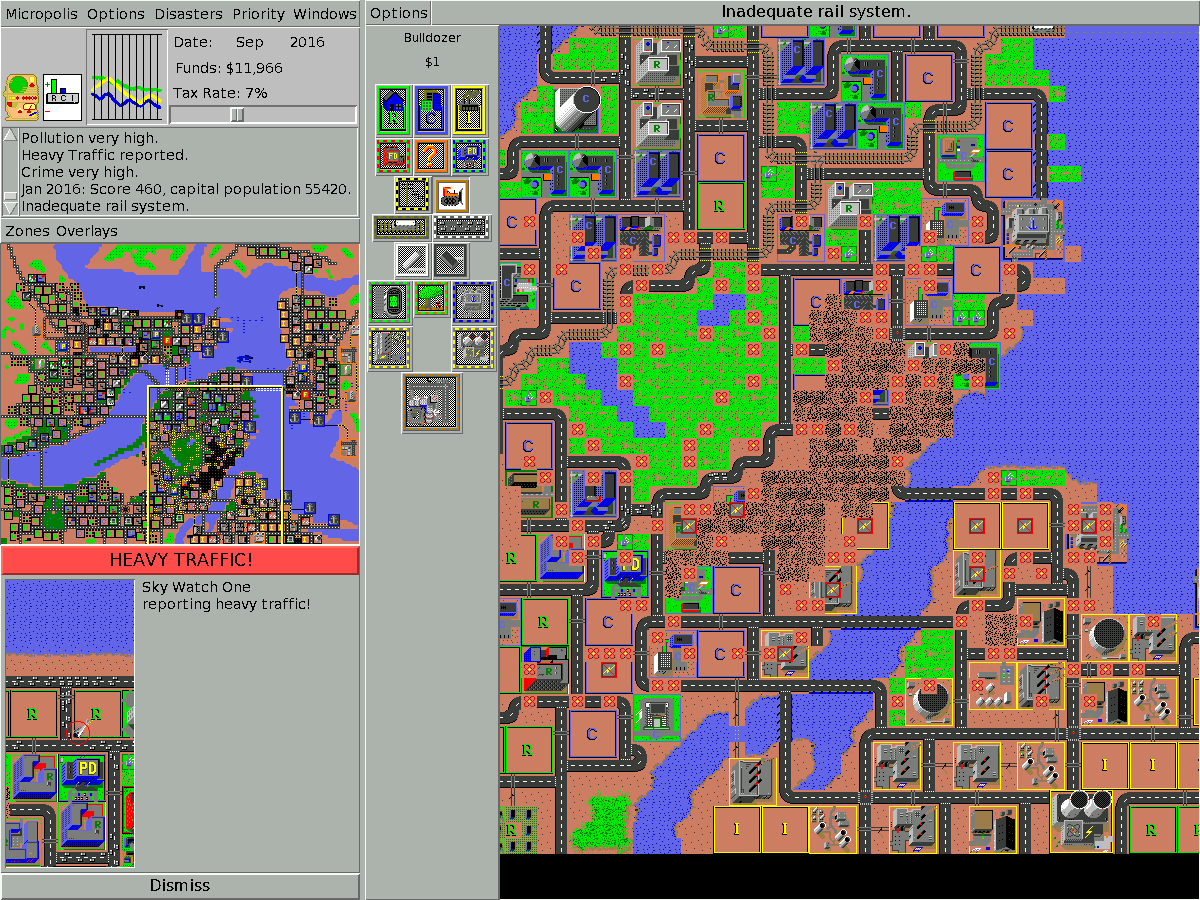
Eschewing the traditional win/lose dynamic of games, Will Wright created SimCity in 1989. It featured an open-ended design where players could build and design their own city. This was a tough concept to swallow. Publishers failed to see its potential (“No one likes it, because you can’t win”), so he co-founded Maxis and published SimCity himself. Though this wasn’t the first of the “omniscient God” games, it wildly popularized the genre and spawned multiple versions and spinoffs, including 2000’s The Sims. [Play it here]
11. Tetris

Nintendo released the Game Boy in 1989, which came bundled with Tetris. Invented by a Soviet programmer in the USSR in 1984, Tetris wasn’t originally intended to be a form of entertainment—it was meant to showcase the potential of computer intellect. But it was a breakout hit on the Game Boy. It was simple enough to play on the go, and it was popular with both adults and children alike. Henk Rogers, the designer responsible for bringing the game to market, explained its appeal: “The basic pleasure of putting blocks together to make something is a universal basic pleasure center.” With over 170 million copies sold, it’s one of the top-selling video games of all time. It’s been played in more than 185 countries, translated into more than 50 languages, and released on more than 50 platforms. Many people credit Tetris with popularizing the puzzle genre of games. [Play it here]
12. Sonic the Hedgehog
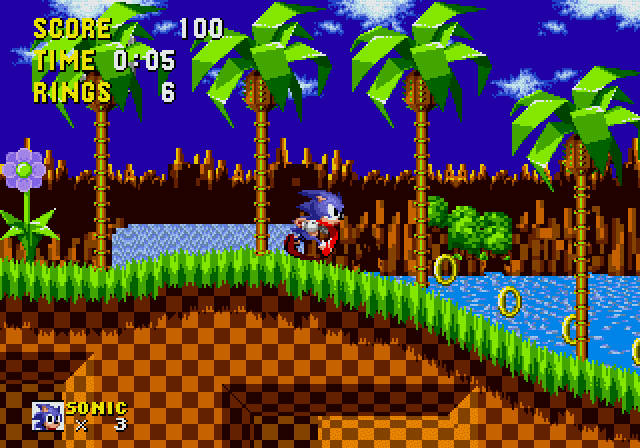
Sega released Sonic the Hedgehog in 1991 to compete with the Nintendo juggernaut. Originally called Mr. Needlemouse, Sonic was positioned as the cooler, spunkier, edgier alternative to Mario. The game emphasized speed—unlike Mario, Sonic zoomed around in a quick blur—which was unprecedented at the time. The spiky blue hedgehog was a commercial success and became Sega’s iconic mascot. [Play it here]
13. Street Fighter II
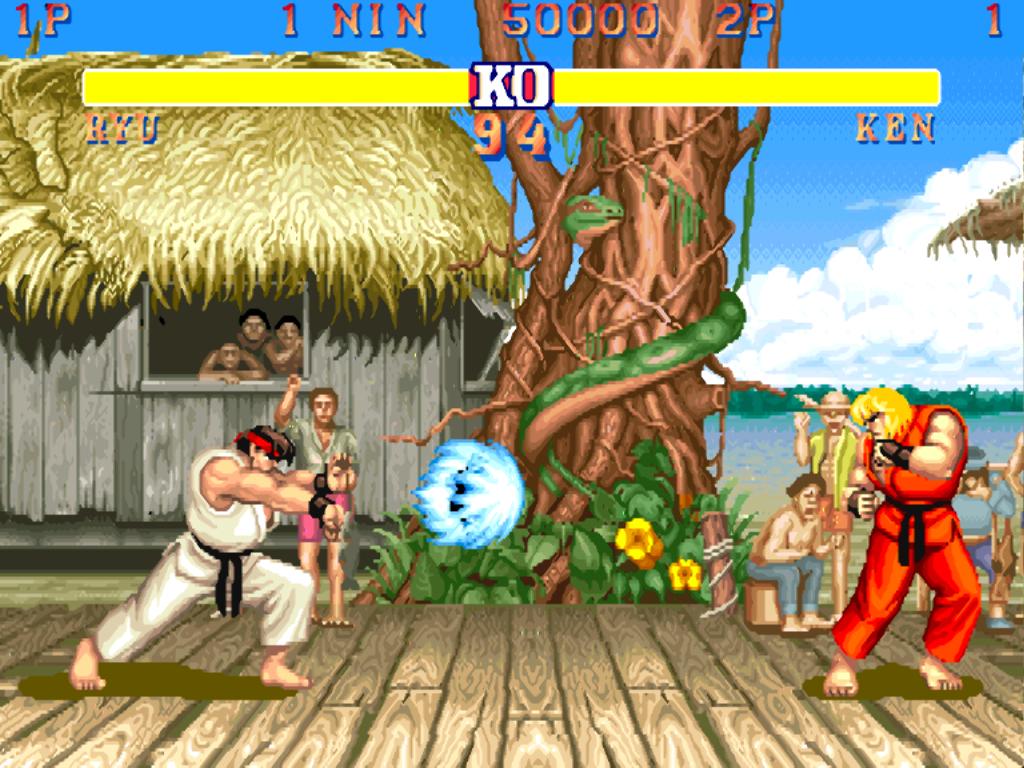
Street Fighter II came out in 1991 in the arcades, and it was so successful that it was ported to multiple consoles. It brought a new technical complexity to arcade games that hadn’t existed before: Each characters had distinctive fighting styles and special moves, so players had to fight strategically. The graphics were also detailed, rich, and beautifully animated. Street Fighter II was hugely influential—it popularized the fighting genre and influenced later fighting games, like Mortal Kombat. By 1995, it had made an estimated $2.3 billion.
14. Doom

Doom, considered to be one of the most influential video games ever, came out for PC DOS in 1993. It was a pioneer of the modern first-person shooter genre, and it introduced 3D graphics and networked multiplayer gameplay. In fact, it was responsible for introducing the term “deathmatch” to mainstream gaming vernacular. This online multiplayer mode was revolutionary at the time, and it was a forerunner for applications like Counter-Strike and XBox Live. [Play it here]
15. Snake
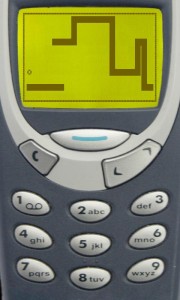
Snake actually originated as an arcade game called Blockade in 1976, which was the first of the “snake” games. But it didn’t achieve mainstream popularity until 1997, when Nokia started preloading Snake in its mobile phones. For many people, it was the first mobile game they ever played, and it set the stage for the mobile gaming explosion a few years later. It’s estimated that it was featured on over 400 million Nokia phones. [Play it on the “Nokia phone” here]






